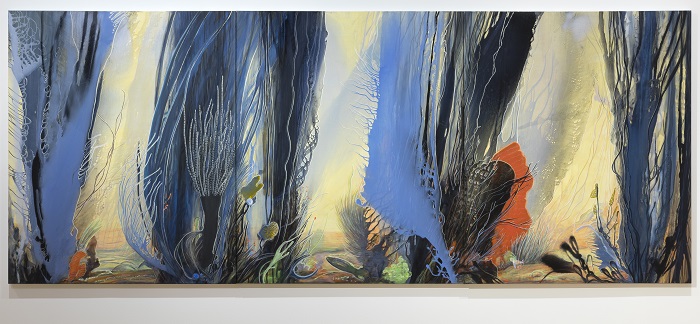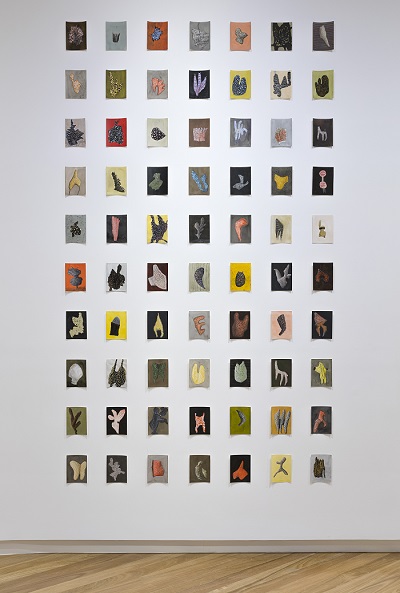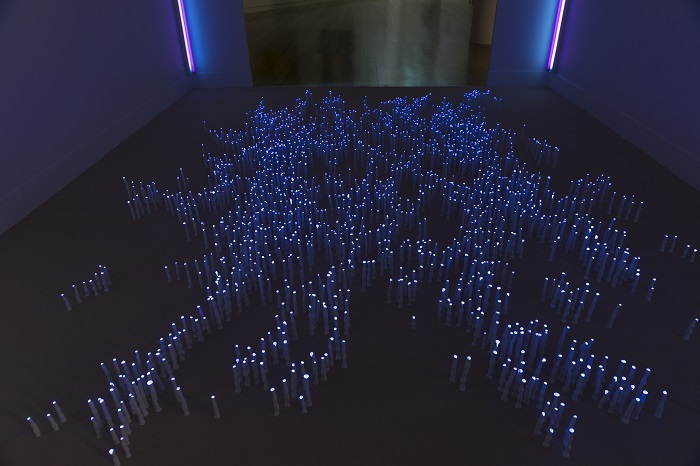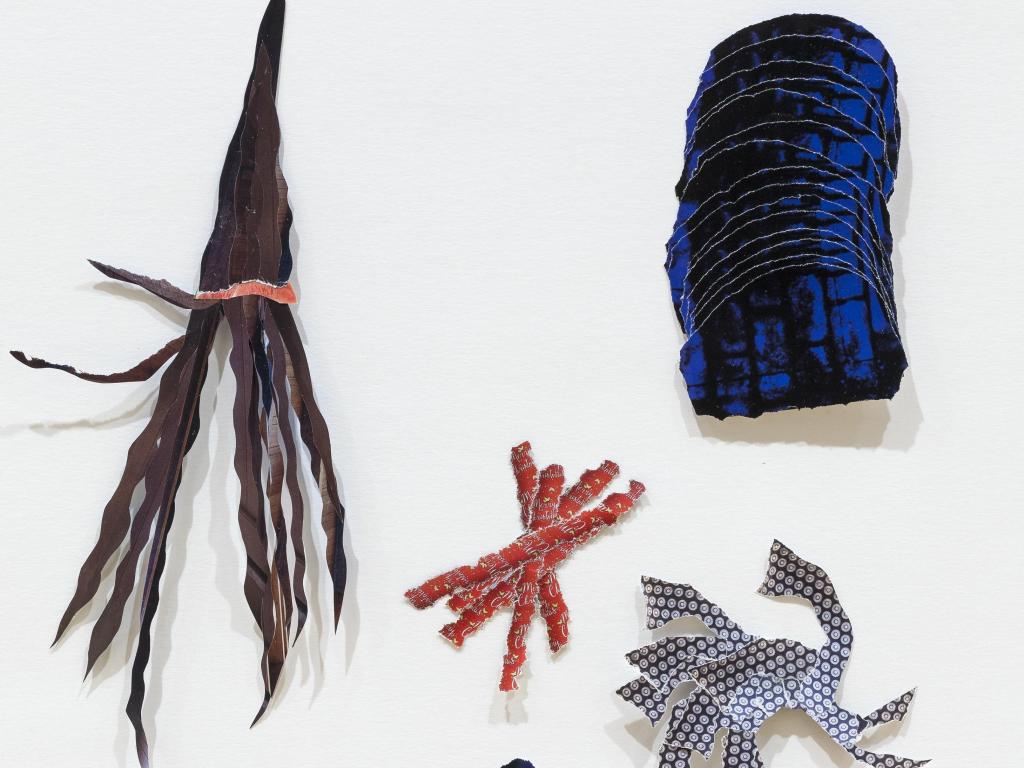Vera Möller: A Thousand Tides, Bunjil Place Gallery. Courtesy of the artist and Sophie Gannon Gallery, Melbourne. Photography: Mark Ashkanasy.
The intransigence of the Australian government to formulate an effective policy around global warming and a decade of record breaking temperatures and extreme weather conditions across the globe has seen the emergence of organisations such as Climarte: a not for profit charity that promotes the exploration of climate change through the arts. Predicated on the belief that the arts can provide hope where our leaders have failed and an understanding, on a visceral level, of what science has been predicting for years. This coming together of art and science reflects a world wide trend in the arts to empower people and help save the planet. The Art + Climate = Change festival 2019, now in its third iteration, showcases 30 curated exhibitions in galleries and museums across Melbourne and regional Victoria along with talks and presentations by artists, climate activists, researchers and prominent thinkers about the consequences of climate change.
The exhibition A Thousand Tides, part of the Art + Climate = Change festival, blurs the real with the imagined to create hybrid forms of flora and fauna. Artist Vera Möller explores the effects that environmental degradation like ‘pollution, global warming, overfishing and tourism,’ are having on the delicate ecologies of Western Port Bay. Currently showing at Bunjil Place in Narre Warren, an outer south-eastern suburb of Melbourne, this monumental civic centre draws inspiration for its name and architecture from the ancestral deity of the Kulin Nation people, Bunjil the eagle. It stands as a metaphor for a building that aims to both protect and welcome its people.
At odds with the size of the centre that houses it, the gallery within is intimate. Careful design allows for comfortable movement through the space which makes it possible for people in wheel chairs or school groups to effectively view the works on display. Spot lighting directed at the art encourages further intimacy. Carefully positioned text and didactic panels inform and support the work while public signs have been provided in various languages, giving a feeling of inclusiveness. Interpretive material such as a video and head phones of Vera speaking about her art, images of her working in her studio and information about Western Port Bay along with a glossary are situated at one end of the gallery. A table on which children and adults can create their own sea life, inspired by the exhibition, is also provided.

Vera Möller: A Thousand Tides, Bunjil Place Gallery. Courtesy of the artist and Sophie Gannon Gallery, Melbourne. Photography: Mark Ashkanasy.
Delicate mixed media works on paper, paintings, collage and sculptural installations form the body of this mindfully curated exhibition by Penny Teale. The large work, memorianma, (2019) can be viewed as both an underwater and terrestrial environment. Inspired by many years observing the cycle of the seasons and ebb and flow of the tides, Möller captures in this mixed media work something of the mystery and interconnectedness all living things with their environment.

Vera Möller: A Thousand Tides, Bunjil Place Gallery. Courtesy of the artist and Sophie Gannon Gallery, Melbourne. Photography: Mark Ashkanasy.
In contrast, nono zone, (2003 -19), a collection of small mixed media studies on paper is a piece that reflects careful observation of underwater life as seen through the eye of both artist and scientist; the more abstract pieces in the collection possibly reflecting the amazing patterns and forms that repeat themselves throughout nature as a mode of survival.
Originally from Germany, Möller studied biology, microbiology and theology before migrating to Australia in 1986 and studying fine art at the Victorian College of the arts. Her environmentally exploratory works have been exhibited both nationally and internationally. Möller’s time on residency allowed her to experiment further with various underwater projects such as the one developed with the Great Barrier Reef Foundation where she speculated about future mutations and fictional marine invertebrates in relation to climate change.

Vera Möller: A Thousand Tides, Bunjil Place Gallery. Courtesy of the artist and Sophie Gannon Gallery, Melbourne. Photography: Mark Ashkanasy.
This is an exhibition to see. Not just because of the quality of its curation, which is very good, or the importance of the environmental issues Möller explores through her art but because it acts as a mirror to the wonders of the world around us. Cajalia, (2019), is an imaginative interpretation of the incredible aerial root system of the mangroves swamps in Western Port bay. This installation, created using thousands of individual forms is transformed by Möller using phosphorescent tips that glow when subjected to ultraviolet light; in nature a means of communicating with the world around, it captures something of this spirit of wonder.
4 stars ★★★★
Vera Möller: A Thousand Tides
Free
10 March – 9 June 2019
Bunjil Place Gallery, Narre Warren, Victoria





